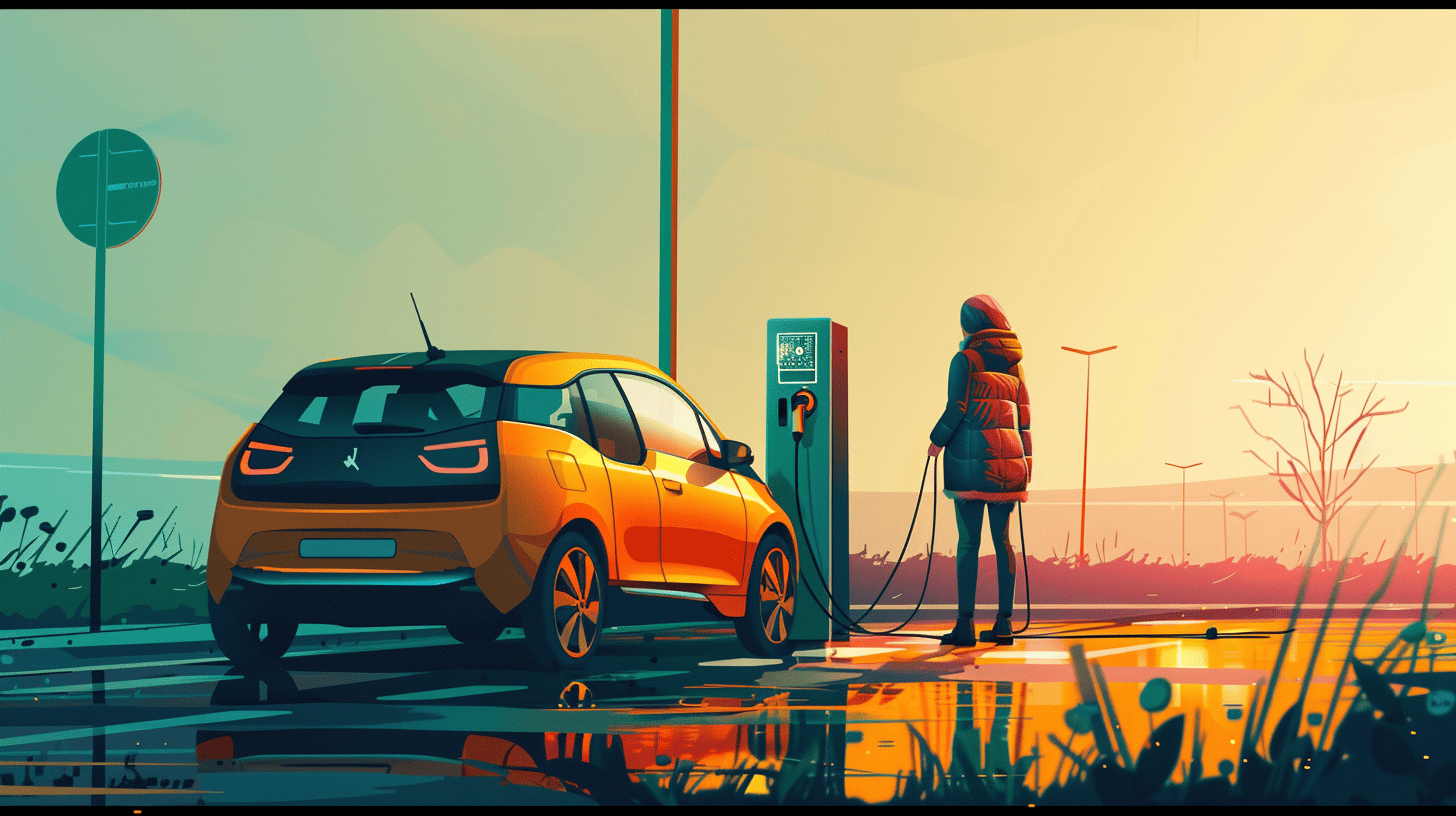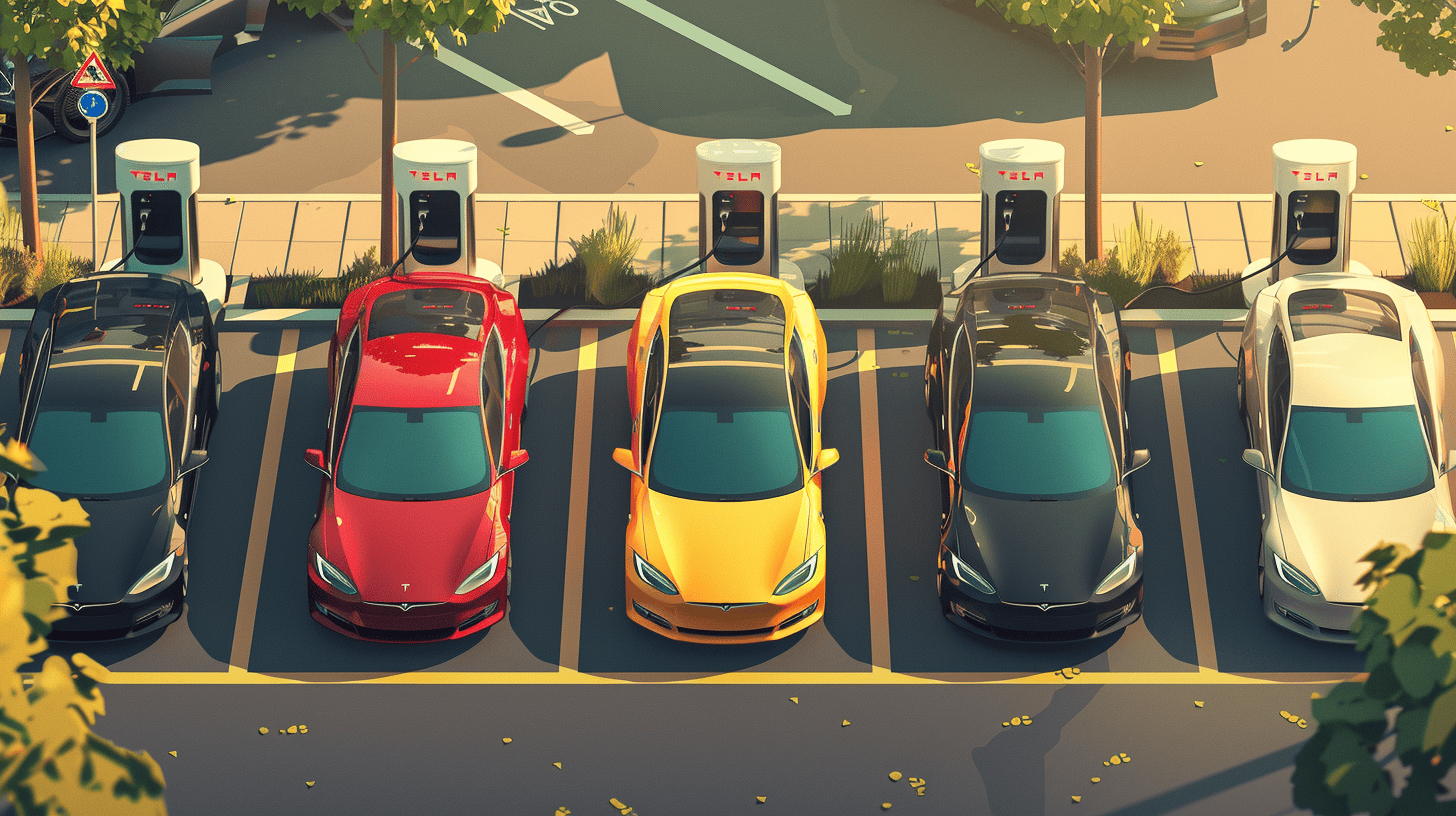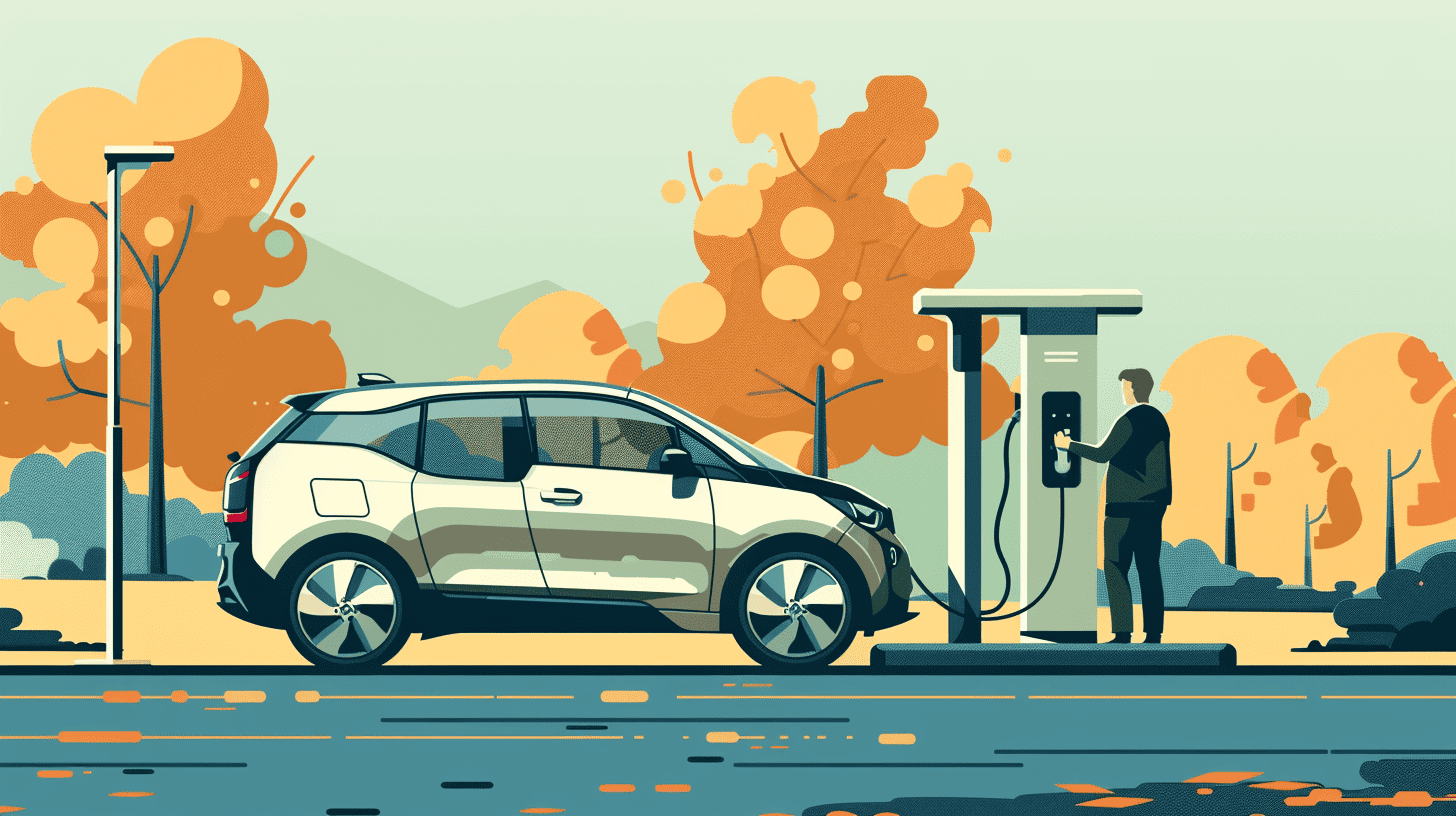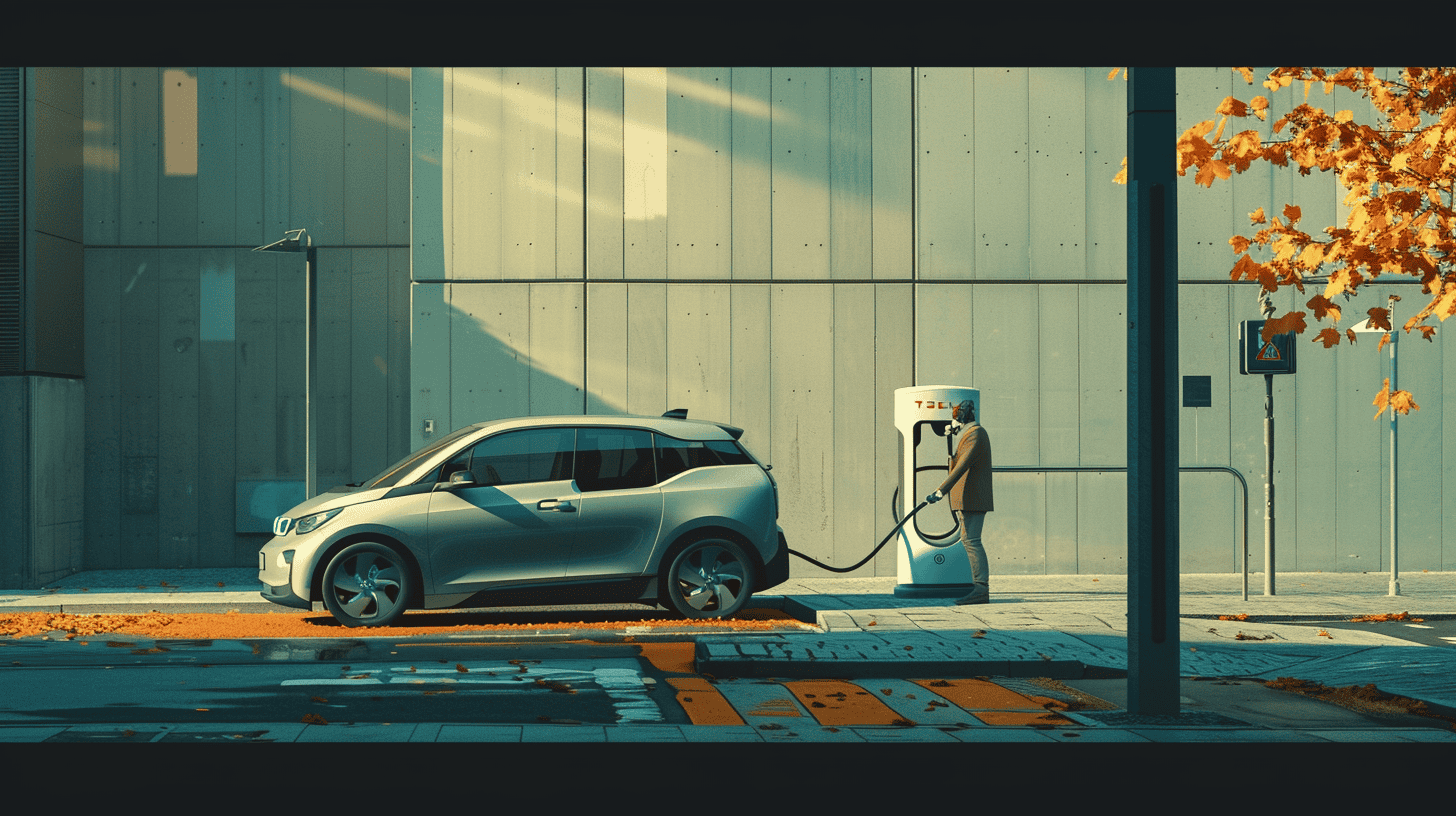
While refueling a petrol car is, to most of us, a straightforward process, charging an electric car can be done in different ways. While the idea is simple — transferring electricity to the car’s battery – different charging modes exist. How do they work, and what’s the difference between them?
Why EVolution
Eleven years from now, newly sold cars in the EU must have zero emissions standards. As sales surge, electric vehicles are poised to be the ones to decarbonize Europe’s car fleet. Where do we start from? What are the outlooks towards the years to come? As the deadline is established, we feel the importance of informing our audience more on the topic. So comes EVolution. At IO, innovation and technology are our core business, so we’ll focus this series on some of electric mobility’s most discussed – and sometimes controversial – aspects.
Alternating current and direct current
The first distinction we need to make, is between the two types of electric currents: alternating current (AC) and direct current (DC). In AC, the flow of electrical current periodically changes direction, switching from positive to negative. The switch happens rapidly in Hertz (Hz) intervals, with each Hz equalling one positive and one negative cycle. The standard voltage in the Netherlands is 230 Volts with a frequency of 50 Hz, which means that the current changes direction 100 times per second. AC is produced using an alternator, a device that features a loop of wire spinning inside a magnetic field. The wire rotation can come from many means: a steam turbine, flowing water, or a windmill. AC can be easily transported over long distances, so AC power comes from the sockets at home or the office.
In DC, electricity always flows in the same direction, polarity is constant, and voltage doesn’t change either. We generate DC by equipping an AC generator with a commutator or using a so-called rectifier to convert AC to DC. Additionally, batteries also generate DC from the internal chemical reaction. Basically, all devices running on batteries – such as your laptop and your smartphone – rely on DC, with chargers taking care of the conversion.
Charging on AC or on DC?
EVs can be charged either using AC or DC. You now know that the electricity from your home sockets comes as AC, as well as one of most of the charging points in your neighborhood. You usually find DC charging points along highways and in strategic points within cities. Knowing how AC and DC distinguish themselves, what’s the difference between charging on AC or DC?
The main difference between DC and AC charging is where electricity conversion happens. When charging at a DC point, the conversion process happens inside the charging station, allowing DC to flow straight into the battery. This process is time-saving because the charging point is more efficient than the converter embedded in the car. By contrast, when using AC, it’s up to the car to perform the conversion – via its onboard charger – and then deliver DC to the battery.
Since the car’s converter is bypassed in DC charging, it can deliver more power. AC charging points deliver up to 23 kWh, while DC ones over fifty kWh. This results in stations that can provide up to 400 kW of power—each EV has a different peak charging power—allowing faster refilling. DC charging points are thus known as fast charging points, whereas charging on AC takes more time.
Understanding the charging curve
Charging with direct current can be up to ten times faster than alternating current. The charging curve is another important aspect to understand when comparing the two charging modes. This curve represents the speed variation an EV charges during a charging session.
The graphs below show that AC charging looks like a flat line, given the small size of the car onboard charger which can handle a limited amount of power. DC charging creates a degrading charging curve, with the EV battery accepting a faster flow of energy when there is a lower state of charge (SOC), then gradually requiring less power as it reaches maximum capacity. This also explains why we see more fast charging points along the highways, as they deliver power in less time, adding up quick energy to complete your journey.
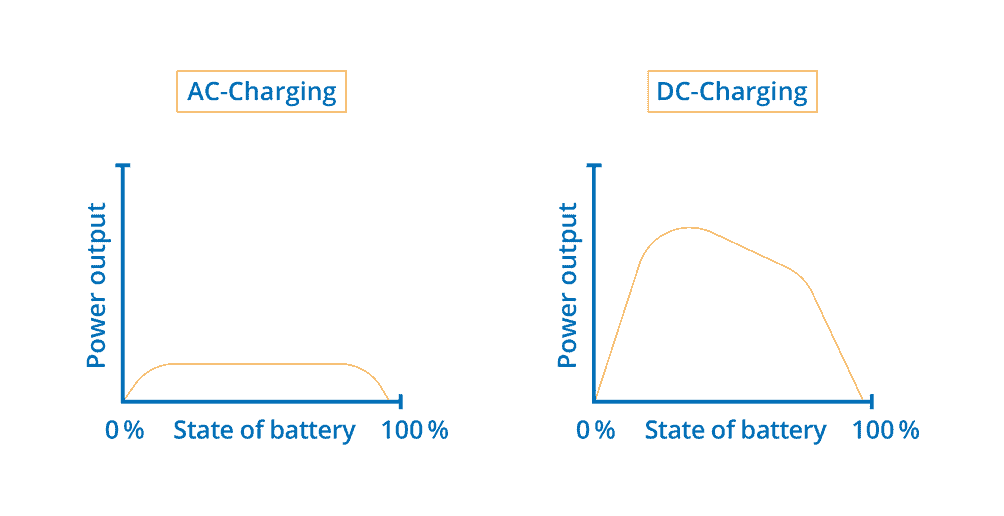
Charging at home
Having the possibility of charging your car at home is a game changer in owning an EV. It is more affordable and more convenient. How to do that? You can technically charge your car from one of your home sockets – also called trickle charging and known as mode one charging. However straightforward it seems, this solution is the slowest way to charge your car, with a maximum charging rate of 3 kW – meaning that it would take nearly a day to charge an average 64 kWh battery. In addition, your home sockets aren’t designed to hold a continuous high load, so charging this way can be quite unsafe.
Therefore, many EV owners install a wallbox at home. A wallbox is an AC charging station that delivers electricity at a faster rate than sockets – some wall boxes can provide up to 22 kWh, same as some AC public charging stations. In addition, having a wallbox also allows more control on charging, deciding for how long to charge for instance or to charge when electricity is cheaper. Wallboxes – or mode two charging – need to be installed by a technician and can also be found at your office parking. Their price varies depending on the power output they deliver and on their features, but some of them come at €100 already.
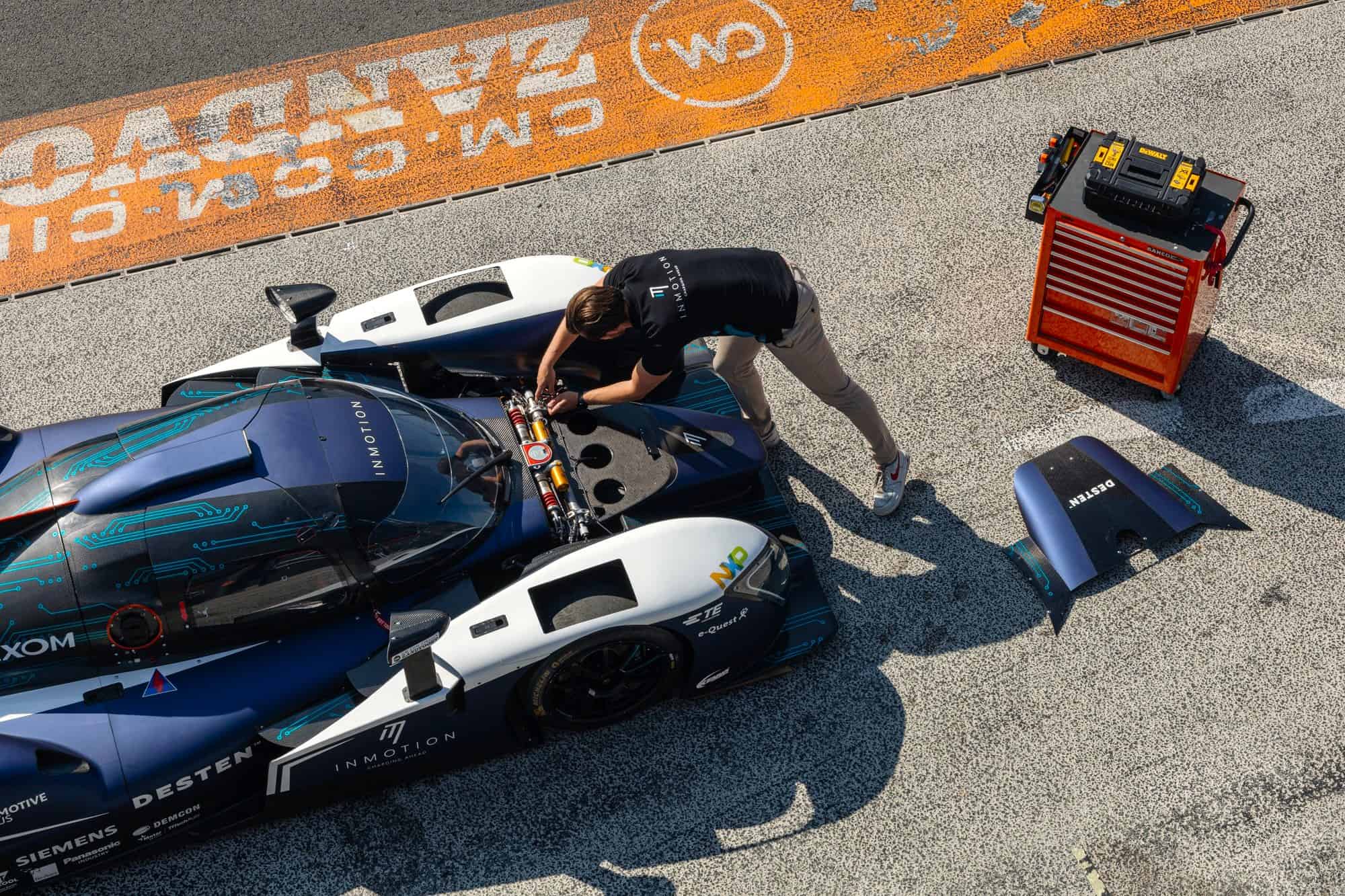
Costs
Charging at home is especially cheaper for households with solar panels, but it is generally more affordable than charging at a DC or AC public charging point. At home, you pay a cost per kilowatt based on your electricity contract—around €0,25 to €0,30 per kWh in the Netherlands. These costs easily ramp up when charging your car outside of your home.
According to an analysis conducted on the Dutch market by Tap Electric, an AC charger costs an average of €0,44 per kWh. A kWh at a fast charging point costs, on average, € 0,72. The study also found that home charging with a variable contract costs an average of €0,19 per kWh. A one-off charge is more expensive, so EV charging companies also sell charging cards, offering a bundle of kWh at a lower price.
Doing some maths on the figures presented, we can easily calculate the different charging costs, simulating the full charge of a 64 kWh battery.
- Charging at home with a wallbox with an electricity cost of €0,19 per kWh: €0,19 x 64 kWh = €12,16
- Recharging at an AC public charging point, assuming an average cost of €0,44 per kWh: €0,44 x 64 kWh = €28,16
- Recharging at a DC public charging point, assuming an average cost of €0,72 per kWh: €0,72 x 64 kWh = €46,08
The charging network
The Dutch charging network is the denser within the European Union, with 699 charging points per 100.000 inhabitants, ChargeUP Europe 2023 Industry Report showed. AC charging points represent most charging stations, with a more widespread presence in towns and cities.
As we wrap up EV charging, in the next episode, we’ll wrap up EVolution, too. We will look at the outlooks and the prospects of EVs in Europe, and what to expect in the years to come.



